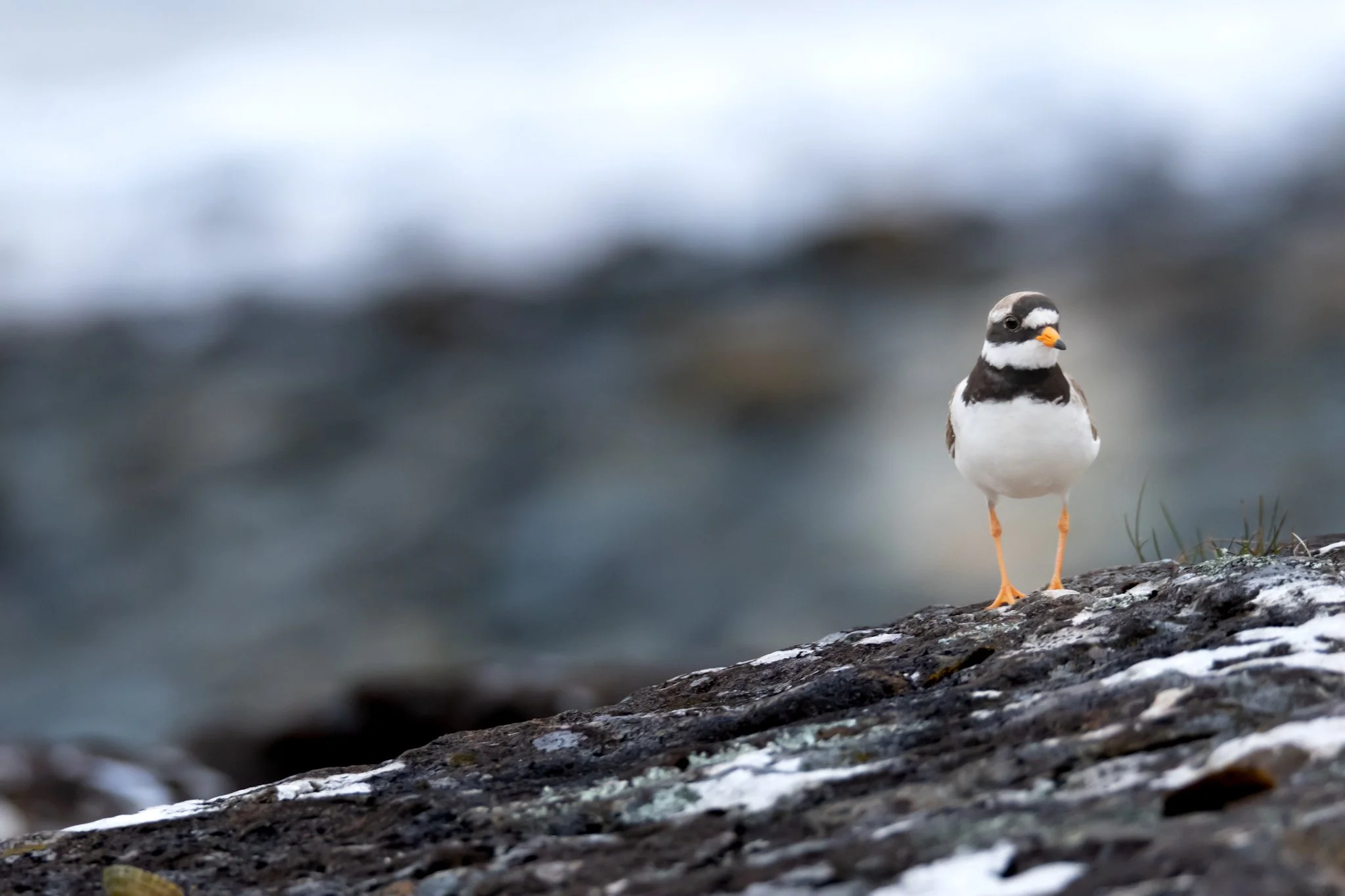Ringed Plover
Delicate, fast-footed, and often perfectly camouflaged against the sand, the Ringed Plover is a small wader with a big personality.
Found darting across UK shorelines and estuaries, it’s known for its start-stop feeding style, clear markings, and distinctive piping call.
Though modest in size, this plover is a master of coastal survival — raising young in the open, relying on distraction displays, and navigating a world of tides and predators with remarkable finesse.
Where to See Them
Ringed Plovers are a familiar sight along the UK’s coastlines, particularly on flat, open beaches and estuarine mudflats. They can be seen all year round, with some birds breeding locally and others migrating to or from Arctic regions.
Look for them in:
Sandy and shingle beaches
Saltmarshes and estuaries
Coastal lagoons and tidal inlets
Occasionally on inland gravel pits or reservoirs during passage
They are widespread around much of the UK, from Norfolk and Northumberland to North Wales and the Scottish coast.
Identification
Despite their small size and subtle colouring, Ringed Plovers are relatively easy to identify with a good look:
Small, round-bodied wader, about 18–20 cm in length
Sandy-brown upper parts and white underparts
Bold black chest band and black mask across the face
Distinctive white forehead and eye-stripe
Bright orange legs and a short, orange and black bill
They blend beautifully into their surroundings, so spotting them often requires a patient eye and quiet approach.
Feeding and Behaviour
Ringed Plovers are classic “stop-run-peck” feeders — constantly darting across the sand in search of prey.
Their diet includes:
Marine worms
Insects
Small crustaceans and molluscs
They forage mostly by sight, using quick dashes followed by brief pauses to scan for movement. On busy beaches, they often seem unbothered by human presence — until a dog or fast movement sends them skimming low across the tide line.
Breeding and Nesting
Ringed Plovers nest on open ground, typically on shingle or sandy beaches with sparse vegetation. They lay their eggs in shallow scrapes lined with pebbles or shells, making them almost invisible.
Chicks are precocial meaning they hatch with their eyes open, covered in down, and ready to walk. They feed themselves within hours of hatching, though they rely on parents for warmth and guidance.
One of their most fascinating behaviours is the distraction display: if a predator or human approaches the nest, the adult may limp away with wings held low, feigning injury to lure the threat away from the eggs or chicks.
Photographing Ringed Plovers
Photographing Ringed Plovers can be incredibly rewarding, but it requires care, patience, and respect for their sensitive nesting grounds.
Tips for photographing them:
Stay low and move slowly — lie flat to get an eye-level perspective
Use a long lens to avoid disturbing feeding or nesting birds
Early morning and late evening light brings out plumage detail and softness
Avoid nesting zones entirely — disturbance can cause nest abandonment
Capturing them mid-run or mid-peck can help showcase their energy and unique movement.
Final Thoughts
Ringed Plovers may be small, but they embody the quiet drama of life at the edge of land and sea. From their fragile nests tucked into pebbles to their confident stances on shifting sand, they remind us how much depends on our coastlines remaining wild, open, and undisturbed.

